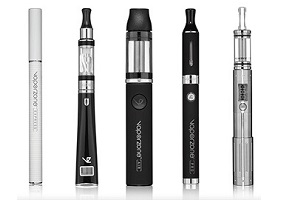Trigger Based Marketing (or Event Driven Marketing) is defined by Wikipedia as a marketing technique that is based on response to a measurable change in customer behaviour or a specific customer action or event that influences customer response.
It is an extremely targeted form of ABM tools and has good action rates because it is initiated when a customer is more likely to be active in a decision process. Research conducted by Epsilon indicated that the average click through rate for triggered emails is more than double the rate for mass emails.
In fact, the same research show that in Q2 of 2012, trigger emails represented just 2.6% of total email volume. However, the open rates hit 49.8% in Q2, jumping 8.5% from 45.9% in Q1, which is almost 95% higher than the mass emails.
Through the use of technology, organisations can deliver personalised and relevant communications to each customer, generating a higher Return on Investment (RoI).
The key to the success of trigger-based marketing is timing and relevancy.
What is an event?
An event is a ‘happening’ in a customer’s life which can lead to a measurable change in a customer’s normal behaviour, state of mind, personal circumstance, or interaction pattern with the brand / company.
It offers the brand / company a reason to communicate with the customer, with a relevant proposal or offer at the right time.
All events increase the knowledge, understanding and information about a customer thus enabling brands / companies to make better, more informed decisions.
Event based triggers as a technique, are not just for Sales opportunities but can also be used to identify many different kinds of significant occurrences such as Customers likely to leave, Customers likely to buy another production and Customer Service / technical support improvements.
What types of triggers are available?
Essentially there are four types of triggers that can initiate an action aimed at a customer:
- Transactional – based on a customer action or non-action such as a purchase or sales enquiry (or not as the case may be), thus providing a natural trigger for follow-up activity.
- Recurring – based on an individual’s details and personal profile. Thus a birthday or membership renewal date can act as the trigger for a piece of communication.
- Behavioural – such as customers opening a new account, post product purchase feedback request, changes in purchasing patterns and changes in spending levels or account values, a cross-sell or up-sell based on a customer’s activity.
- Threshold – where a customer’s actions reach a threshold, such as exceeding a spending limit or over-utilising a facility
Thus, in trigger-based marketing, an activity or non-activity can act as a catalyst to initiate a certain event.
For instance, an IT Manager is browsing for a certain laptop but does not make a purchase. This non-purchase could automatically trigger an email to that individual, encouraging them to purchase by providing them a special offers or discount within that product category.
Alternatively, if the IT Manager does make a purchase, a trigger based email can contain a special reward offer or discount for that buyer’s next laptop purchase.
Joined-up marketing
Trigger functionality is a very common component within marketing automation or integrated marketing programmes.
However, that is not its only use. For example, if an online customer conducts a download or requests a call, a company can provide a timely ‘welcome’ message that simply confirms and reinforces a personal relationship with the customer. It may also encourage the visitor to take action earlier than originally intended.
Trigger messaging/functionality can easily be linked to an individual’s profile and website behaviour, and can also help enable the provision of great feedback through satisfaction surveys.
Beyond online medium
Trigger-based marketing does not need to be confined to online campaigns only. It can work equally well in direct mail or in SMS marketing. All these mechanisms share a direct two-way communication channel between the brand and the individual, maximising the potential for the message to reach the target audience on a one-to-one basis, and perhaps more importantly allowing for a one-to-one response.
So what are the benefits?
A well-considered trigger based campaign can deliver significant results. By aligning the content and timing of messages with customer needs, the relevance, response and ultimately the revenue from direct marketing campaigns are increased.
Due to the relevance of the content and the timing, it is common for trigger based campaigns to have a higher success rate than standard campaigns. This in turn, strengthens customer relationships, making them feel valued.






